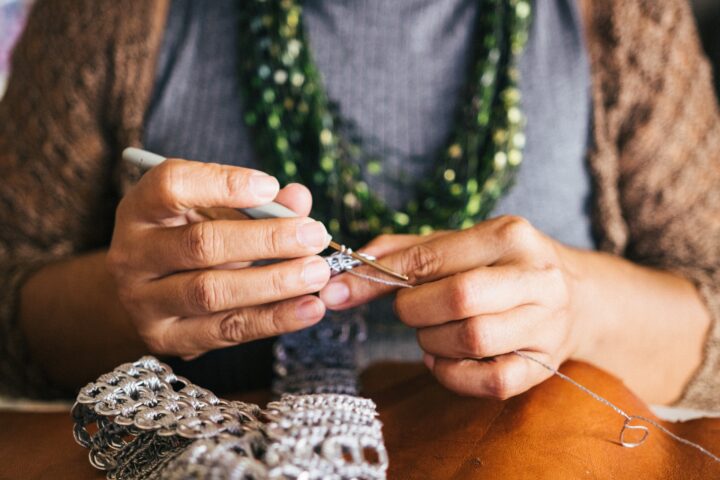Benefits Of Needlework For Women’s Health
Over the past few decades, more and more women are returning to the understanding of the “importance of needlework.” A lot of girls now from their youth begin to sew, knit, embroider, and do various crafts. Many have an understanding that from doing some kind of needlework, they get healthier and get rid of many problems, both mental and physical.
In a person with a modern urban pace of life, more of the left hemisphere of the brain is involved, which is responsible for logical thinking. When a woman begins to do needlework, she develops the right hemisphere – creative.
At the moment of the creative process, the mental state of a woman calms down, it tunes in to positive and pleasant emotions. If you look at a woman who constantly works in the office and has nothing to do with needlework and a creative woman, you can see how distinctive their mental and emotional state is.
In the same way, it is easy to see the difference between the fair sex, when needlework is passed down from generation to generation, and in the family, from an early age, girls are instilled with a love for creativity. When engaging in any kind of creativity, many women normalize hormonal balance. Such women are more feminine and soft.

Types of needlework and their effect on the body
Based on many years of experience and knowledge that has been passed down for hundreds of years, we can draw some conclusions about the effect this or that handicraft has on the body.
So embroidery with a cross, satin stitch, beads or ribbons helped people with diseases of the vascular system, increased the overall resistance of the body, and treated sexual diseases.
When doing macrame, you can notice how improvements occur in the stomach, kidneys, and heart. As a person becomes calmer and more balanced.
When a woman is engaged in sewing, her pressure is restored, her general nervous state is restored, sleep patterns return to normal and the circulatory system improves. When sewing toys, women endure depression more easily. They are more active, suffer less from allergic disorders, and better navigate in space.
The occupation of beading and the creation of jewellery, as the ancestors say, removed damage and helped in removing the evil eye. Could cure pain in the teeth and head. Women were less prone to digestive disturbances, slept better, and had fewer runny noses or sore throats.
Here you can buy metal accessories, beads made of natural stones, freshwater pearls, amber and crystal to create necklaces, pendants, bracelets and earrings, and also felt for making brooches and sewing toys.
While patchwork coped with neoplasms and treated blood circulation, knitting helped needlewomen heal the kidneys and heart. Knitting needles had a healing effect on the treatment of spinal injuries. But crocheting made it possible to slow down the effect of sclerosis. This needlework technique, like tatting, treated the joints and helped restore the nervous system.
And lace could cure eczema or even slow down ageing. Needle lace could help to survive serious shocks and treat dysbacteriosis.
Being engaged in needlework, a woman can create around herself a specific atmosphere of kindness, warmth and happiness. Creating things made with her own hands, a woman creates amulets with glitter for herself and her loved ones. That is why over the past few years people have begun to appreciate handicrafts. And more and more women are returning to the origins of needlework.
How does needlework relieve stress?
To assess the validity of the statement, consider the mechanism of the brain during a stressful load. Prolonged exposure to cortisol leads to increased anxiety and fear. Responsible for learning, memory, and control of emotions and behaviour, the neural connections of the brain are destroyed under the influence of an insidious hormone.
Thus, if you slightly deceive the nature of stress, throwing the result in the form of hand-made objects to the brain, cortisol will play a creative role.
The study showed a direct relationship between the regularity of needlework and the mood of each subject. People who knit 3 or more times a week feel calmer and happier than those who knit less frequently.
In general, needlework is good for the brain because it: Helps to solve various complex tasks and problems
- Strengthens social bonds
- Fills life with meaning
- Develops fine motor skills, spatial perception and eye-hand coordination
- Excellent teaches
- Concentrates attention and thoughts at work
- Develops imagination and creativity Strengthens memory and reduces the risk of mental disorders
- Promotes relaxation, meditation and relaxation
- Excellent treatment for stress and depression
All of the above supports the idea that such hobbies improve and protect us from cognitive impairment. Brain health depends on many factors, but doing needlework regularly can be beneficial in the long run.


